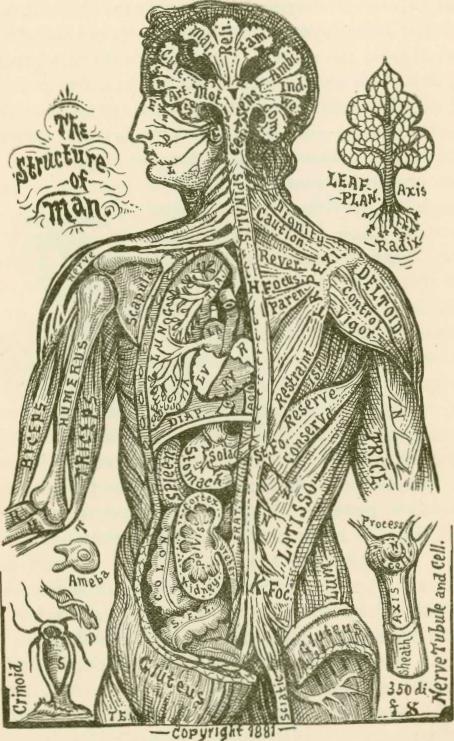82 HISTORIC GROWTH OP MAN.
THE NERVOUS STRUCTURE OF MAN.
CRINOID AND MAN. 83
parts, each of these assuming some special portion of the work.
For example, take one of the polyps, a crinoid, as figured in the foregoing engraving. Here the entire function of digestion is performed by a simple sac or stomach. And this sac constitutes nearly the whole body. As we pass upward in the scale of life we find that in other animals there have been added to this primary sac various other organs, each doing a special part in the work of digestion. Thus in one case we have a liver added to separate bile; in another there is a pancreas to help digest the fat in the food, with intestinal or salivary glands to digest its starchy portions, and teeth to masticate. Of course, where all of these exist, the whole process of digestion and nutrition is carried on much more perfectly. Compare the figure of Human Nutrition with that of the crinoid and ameba.
We must note that this division of labor, this greater complexity is not effected chiefly or simply by increasing the number of organs or parts. But it is accomplished by changing their form and arrangement. For example, one of the crinoids, the Briarean Pentacrinite, had thousands of muscles. But these muscles were all alike in shape.. Each was a short, nearly straight slip of fiber. The only motions that they permitted were those of reaching out its tentacles, grasping its food, drawing this into its mouth and bending its body backward or forward in locomotion.
In contrast to the crinoid we find in man the small number of 232 muscles, duplicated on the right and left sides. Besides these we may count six
